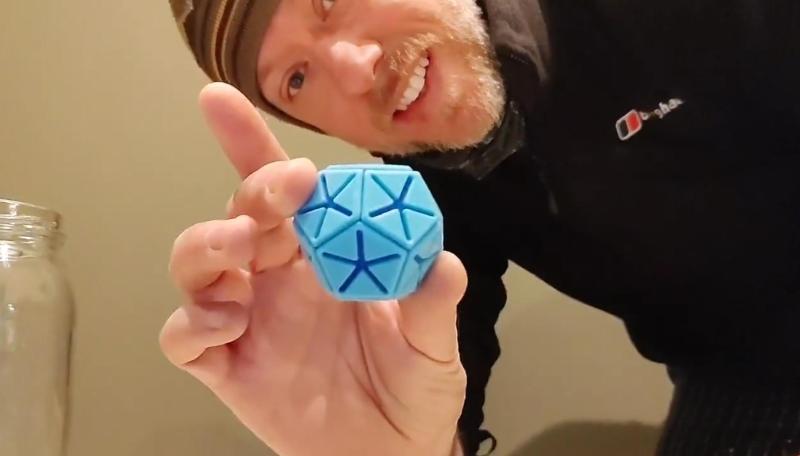Sometimes a visual or tactile learning aid can make all the difference to elucidating a concept to an audience. In the case viruses and their methods of self-assembly, [AtomicVirology] made a 3D printed device to demonstrate how they work.
The result of this work is a printed dodecahedron, assembled from multiple components. Each face of the dodecahedron consists of a 5-sided pentagon, and is a separate piece. Each face contains magnets which allow the various faces to stick together. Amazingly, when a bunch of these faces are all thrown into a container and jumbled together, they eventually assemble themselves into complete dodecahedrons.
While it’s no virus, and the parts can’t replicate themselves en masse, the demonstration is instructive. Viruses themselves self-assemble in a similar fashion, thanks to sub-units that interact with each other in the tumultuous environment of a host cell.
We love a good teaching tool around these parts. 3D printing has the benefit of allowing teachers to create their own such devices with just a few hours spent in some CAD software.
Viruses…assemble! Check out our new 3D printed model to demonstrate virus symmetry and self assembly. #lovevirology #3Dprinting pic.twitter.com/BWOTIZXMNU
— Stephen Graham's Lab (@AtomicVirology) December 8, 2022
















Just need to put numbers on the sides
So if you make a dozen of these, and put them in a bigger box, do they all assemble, or do you get a lot of stuck partials?
I think that’s covered under “when a bunch of these faces are all thrown into a container and jumbled together, they eventually assemble themselves into complete dodecahedrons”
One of the things I find coolest about biochem is that in most cases, viruses and enzymes have a three dimensional structure driven by entropy: if you make the long straight polymer of amino acids and do something similar to the above, just chuck it in some water and let it thrash around, it settles into its active three dimensional form not only without external energy input but because that’s the lowest energy state for that set of amino acids. This includes some very significant small and medium scale structures of helices and sheets that provide a robust and massive overall structural integrity.
“5-sided pentagon” <– I love this kind of precision !!
Can't wait discovering the other pentagons !
I too would like to see them pursue this angle
There has got to be more than one side to this story
I have heard of being two-faced, but 12?!
… there are many sides to this idea … five in fact!
Squirreling this one away for the next “evolution and abiogenesis are lies because entropy” argument.
Well I mean looking at regularly spaced waves and sand dunes is a good starting point for showing that if you have system with lots of energy you’re going to see spontaneous patterns forming. Being alive is itself a local violation of entropy, right? Just, in the big scheme, entropy wins, but locally, when you eat something else, that’s entropy winning overall but you winning one small battle for preserving your state by increasing something else’s entropy.
So, yeah, if you can make a system that has a lowest-entropy state that looks organized, and you add a whole bunch of energy into it, it’s going to end up looking organized.
Ahhh….magnets!